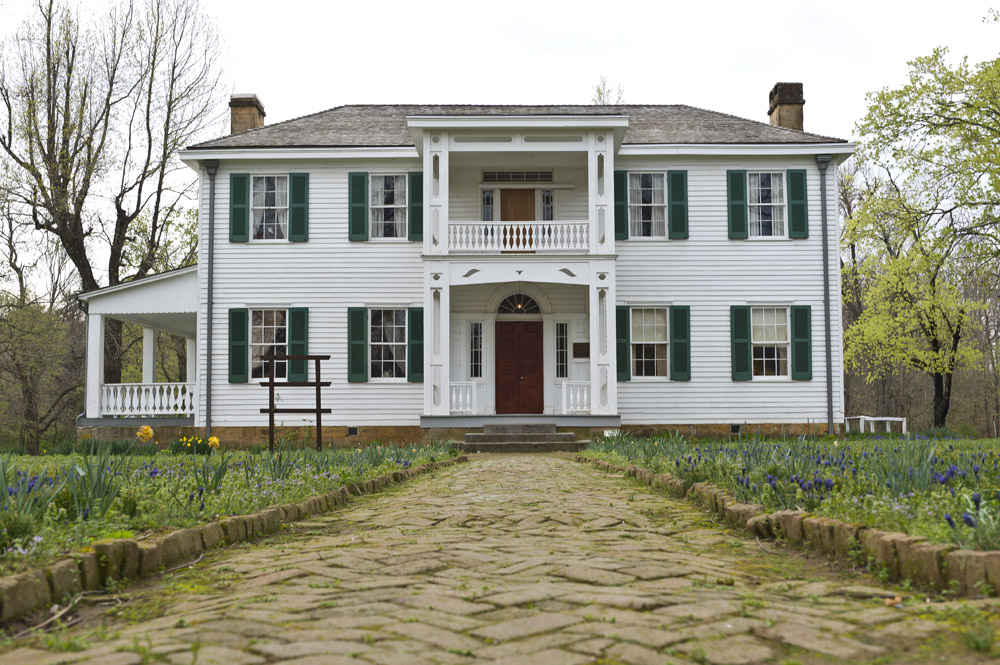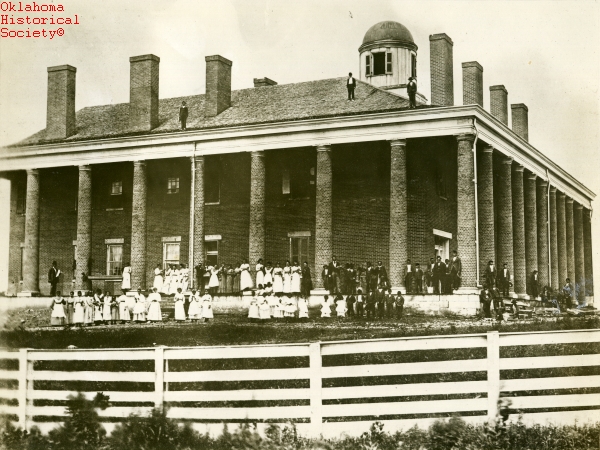Indian Territory
A large land area west of the Mississippi River was called the Trans-Mississippi during the 19thcentury. It consisted of the states of Arkansas, Louisiana, Missouri and Texas, as well as a region loosely called Indian Territory. Indian Territory, which much later became the state of Oklahoma, was selected as a new home for many native tribes occupying valuable land that whites wanted in the southeastern states. Government leaders believed that removing the Indians to the new Indian Territory would resolve conflicts by creating a colony all their own where fewer conflicts would arise. The Cherokees were one of the tribes removed from its ancestral home and taken to Indian Territory. Hattie read of their removal as a girl and was forever impacted by the brutality and unfairness of it.
- http://www.pbs.org/weta/thewest/places/trails_ter/indian.htm
- http://digital.library.okstate.edu/encyclopedia/entries/i/in018.html
George M. Murrell Historic Home
 George M. Murrell Home
George M. Murrell Home
Photo courtesy of the George M. Murrell Home and the Oklahoma Historical Society
Cherokee Female Seminary
Cherokee leaders prioritized education for their youth and built modern three-story boarding schools for them in 1851. Eastern-educated teachers like Hattie Sheldon were desired as teachers. One of Rev. Worcester’s daughters, Sarah, returned to Park Hill and taught at the female seminary before her marriage.
In A Distant Call: The Fateful Choices of Hattie Sheldon, Hattie reads about the outstanding schools and sees a photo of the female seminary brick building that she never forgets. Her memory of the school and its place in the plot provide an interesting complication.
 Cherokee Female Seminary, Park Hill, Indian Territory
Cherokee Female Seminary, Park Hill, Indian Territory
Photo: Grant Foreman Collection, Oklahoma Historical Society Research Division
